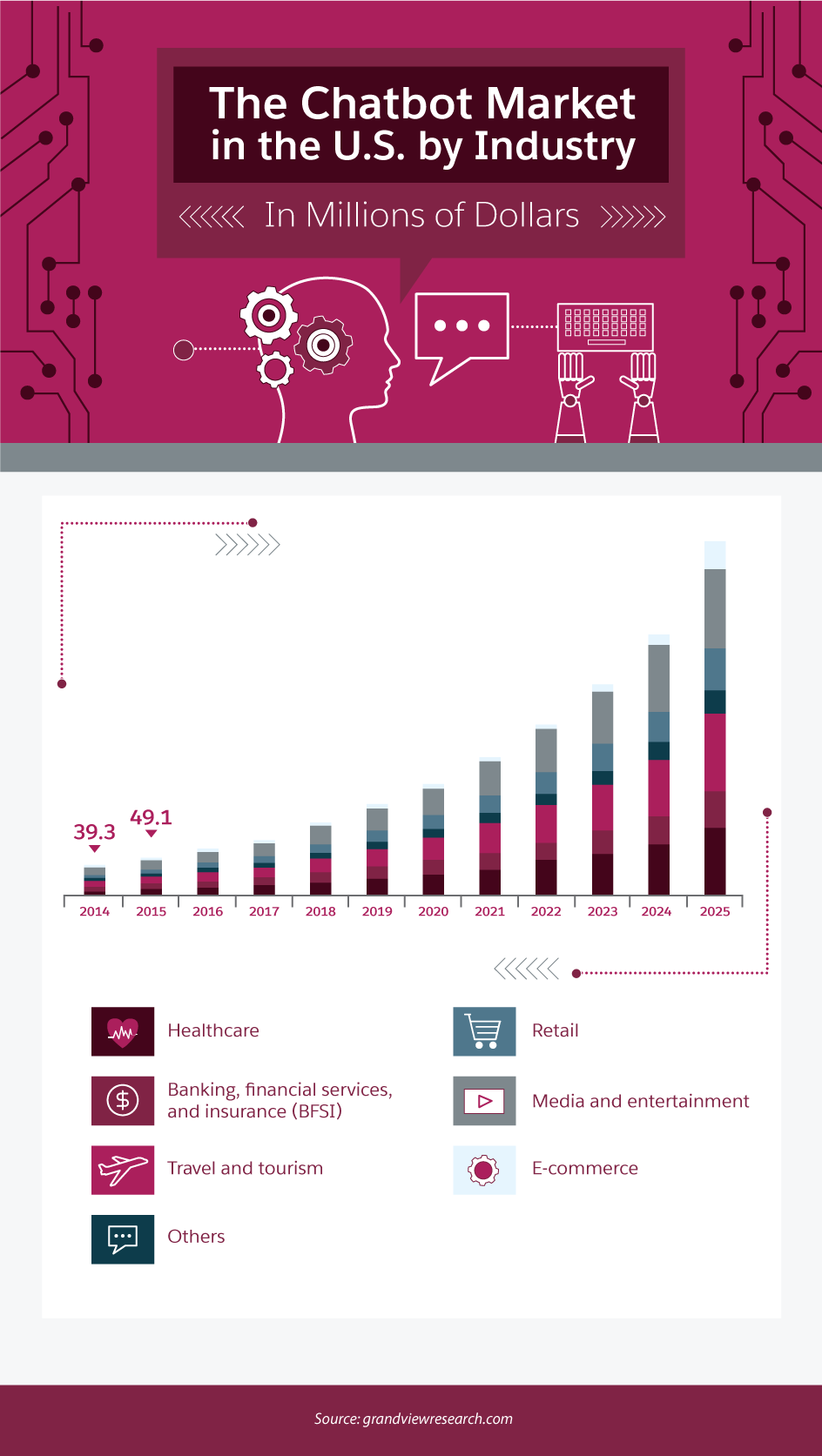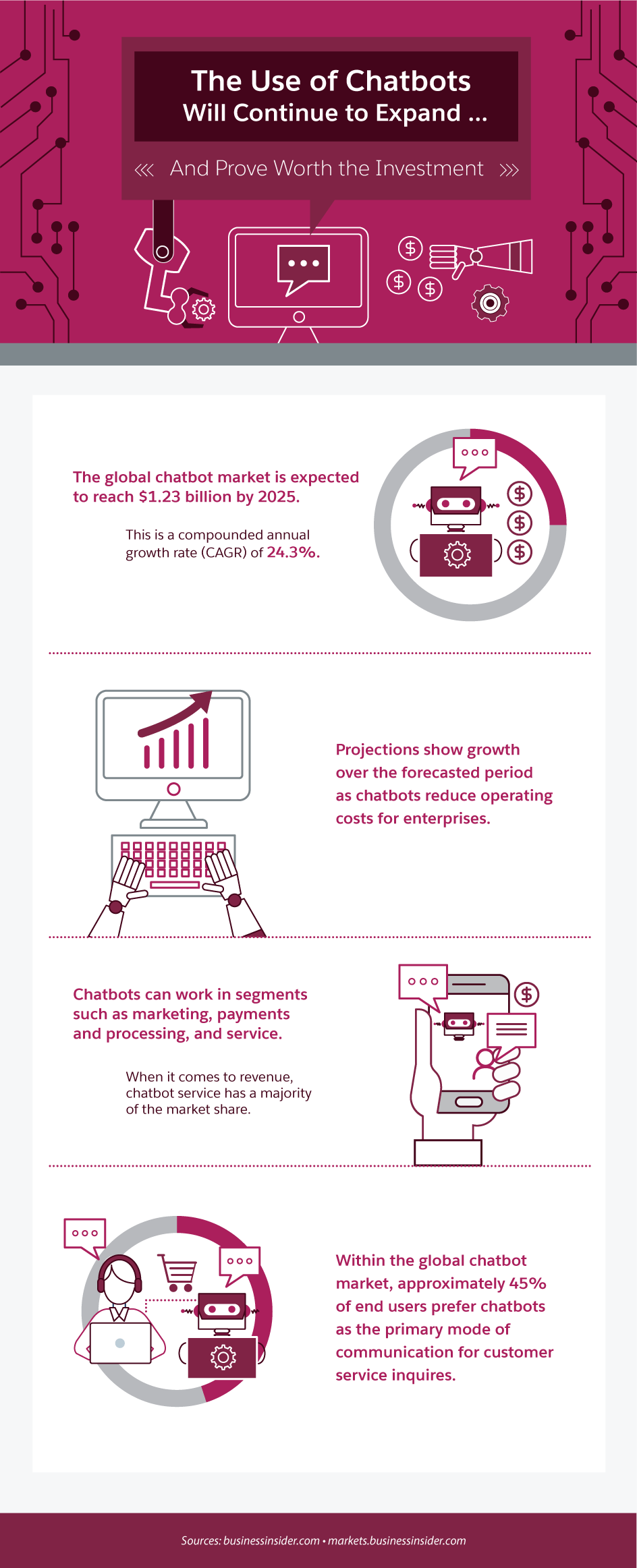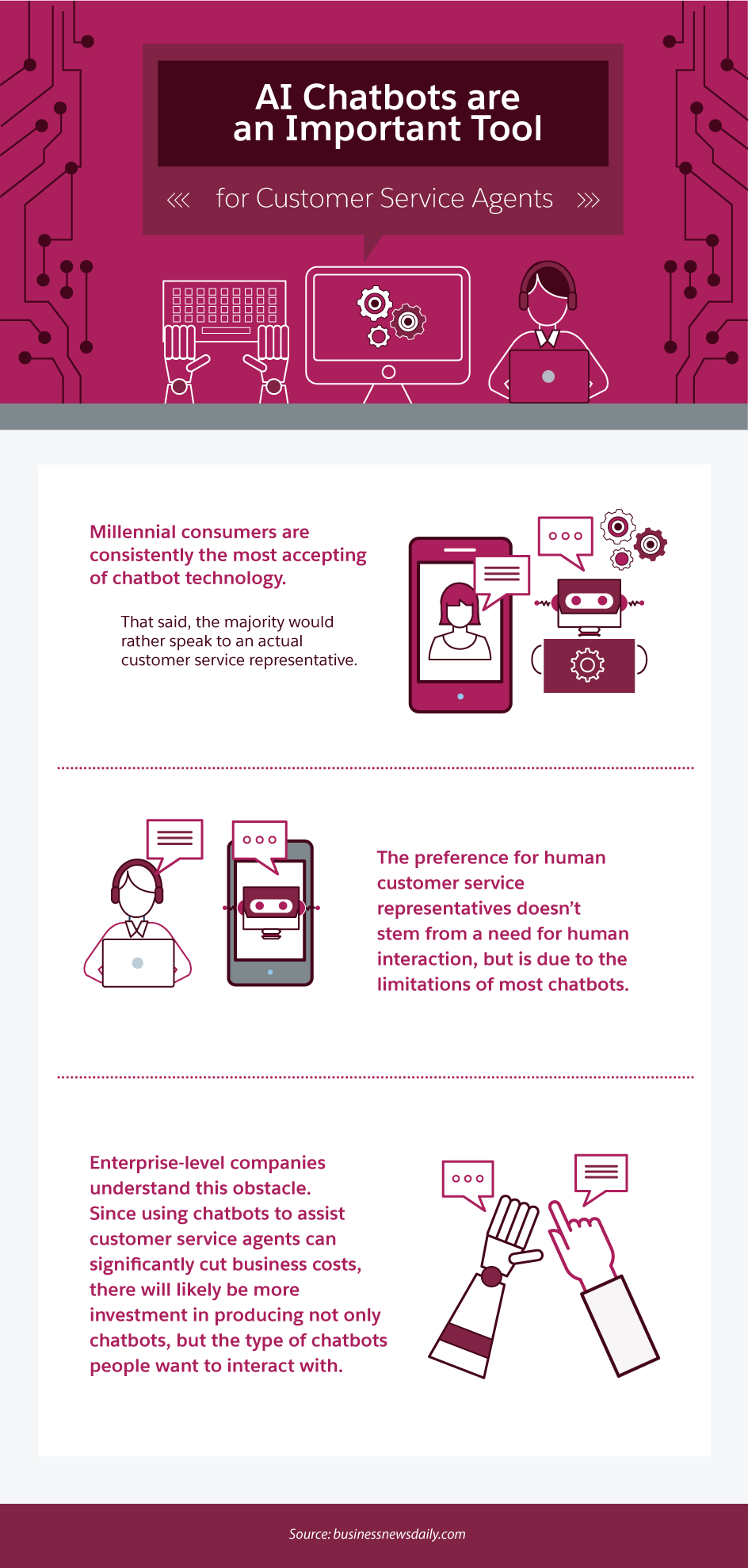ai customer service
4 Times AI Chatbots Can Help Your Customer Service

Millennials spend more than $600 billion dollars annually. That’s a lot of buying power. It’s also a lot of brand power if you can make them fans of your products or services, since millennials use social media more than any other generation and often talk about (and to) brands online.
The last decade has seen leaps in technology adoption across all generations, and with technology comes the expectation of convenience and ease. Millennials, especially, want impeccable products and services at a low price. They want to feel important to brands, and they want every communication with a company to be tailored, hyper-relevant, convenient, and fast.
How do business leaders manage all that without bursting their bottom line? Adopting new technology, such as AI integrated into customer service and chatbot software, gives them the advantage over their competitors.

What Is an AI Chatbot?
At its core, a chatbot powered by artificial intelligence is similar to a high-tech, automated phone system. Like an automated phone system, a chatbot can immediately field and answer service inquiries to the right person in real time. Unlike a phone system, however, a chatbot is text-based, and customers can access it on your website, from a mobile device, and with certain messaging apps they likely already use.
Chatbots have been around for decades, and their limitations were also similar to automated phone systems. They were very obviously machines, and dealing with them was a pain for customers. These chatbots could only be programmed to give canned responses before stepping aside and letting humans take over to recover a positive customer experience.
Today, the chatbots use artificial intelligence to solve more complex inquiries and behave more like actual people. The result? Customer service use cases for AI chatbots are increasing. Here are a few ways tech-savvy service managers are using them to improve performance.
Challenge 1: Lightning-Fast Service
According to Forrester, 73 percent of customers say that valuing their time is the most important thing a company can do, and 53 percent will abandon an online purchase if their questions aren’t answered right away. One of the greatest challenges of modern customer service is simply getting to a support ticket fast enough. Users want instant solutions and, barring that, they at least want instant attention to their issue. When customers need service, chatbots are ready.
Like an automated phone system, chatbots make it easy to start service interactions with customers. A pop-up window, clickable tab on your website, SMS bot for text messaging, or other AI chatbot options make service accessible at the moment a question pops into a user’s head. This is an impossible feat for a service center limited by a finite number of available agents.
The best AI chatbots can even resolve common or simple inquiries, such as adding a payment option or going over shipping options, without any assistance from a customer service agent. That way your agents can focus on more complex, personal inquiries, such as custom product design or uncommon error messages.
Challenge 2: Pre-Empting Problems
The best way to solve any customer’s problem is to prevent it altogether. If that were easy, however, companies wouldn’t need to invest $350 billion in customer service. How do companies prepare for and eliminate common problems? Many ask their service agents what kinds of issues pop up regularly and what solutions please customers. Unfortunately, with so many different agents working separate tickets, it can take a while to notice and act on patterns.
Customer service AI makes this next-level customer service strategy easier and faster by tracking, pooling, and analysing data from every interaction. From there, managers can work with their teams and other departments heads to prevent common issues, freeing up valuable agent time while providing a more pleasant customer experience overall.

Challenge 3: Being Everywhere
As of June 2017, 88 percent of North Americans were using the internet. Before the internet was part of a consumer’s everyday life, one of the most common ways for customers to ask for help was by phone. Some would show up at your store or office to have more complex or personal interactions, but service managers knew that great service meant boosting investments in a call center.
Technology has changed that. These days, customers want to communicate their issues in a variety of ways, with 68 percent preferring messaging channels. They want seamless service without having to pull up another window, pick up the phone, or leave the house. In short, they want agents to be everywhere, and they want help no matter where they are.
AI chatbots help by being available where your customers already are. Many chatbots integrate with existing messenger apps and are easy to add to your website so customers can access help wherever they are, with whatever they’re doing.
Challenge 4: Forecasting
How do great managers decide who to staff and when? Experience tells them when the typical peak inquiry hours usually are. They know that the introduction of new products, packing, services, webpages, and more can all result in an uptick in support requests, while updates to FAQ pages and other self-serve assets can decrease tickets if done well.
Maximising your personnel budget while keeping agents in the sweet spot between overworked and disengaged is the holy grail of service ROI. The right data can bring you closer to perfection.
How can a chatbot help? The more often your customers use a chatbot for service, the more your customer service AI learns. It’s not just how to interact with customers that a chatbot gets better at: It also analyses information about how your service team can best use its capabilities, such as which queries should be handled by the bot and which should be routed to an agent. It also means tracking and analysing what kinds of queries happen when, and whether a manager will need more or fewer agents to satisfy the demand.

Limitations of Chatbots
Gartner predicts that by 2020, people will have more conversations with chatbots than with their spouses. That’s not because people don’t talk to their partners anymore, but because chatbots are becoming more intelligent and complex. They’re starting to seem like actual people. However, that doesn’t mean they’ll outperform your service staff across the board.
Chatbots have been around since 1966, when researchers at MIT created ELIZA, an early natural language processing program. At the time, users could easily tell that Eliza was not a human. As chatbots use increasingly better artificial intelligence, the differences between chatting with a computer and a human are less obvious. For this reason, service managers should use chatbots to augment and improve their current service capabilities, not to entirely replace workers.
While they’ve come a long way, today’s AI customer service experience is generally limited by two factors: technology and data.
Available Data
Artificial intelligence learns as humans do: by recognising patterns in language, behaviour, and events, then creating predictions about what might happen in a similar situation. That means the more customer service situations a chatbot can learn from, the better. In this sense, chatbots are like muscles, because the more you use them, the better they perform. If you don’t use them enough, they won’t be able to do any heavy lifting when it comes to service.
Technical Limitations
How often is it possible to use your customer service AI? That depends on the available technology. We’ve come a long way, but computers still can’t do everything humans can, especially when it comes to creativity and customisation, such as creating conversation hearts or writing a movie script. In terms of customer service, that means a chatbot may have trouble adding a personal touch to service interactions. That’s why it’s important to set up your AI customer service system to send complex inquiries, upsell opportunities, and people in need of a more personal touch to human customer care specialists.
When paired with great service agents, AI chatbots can be a huge asset to any customer care department. They help your agents provide faster service, analyse data that gives your company insight into how to improve its products and services, offer service whenever and wherever your customers need it, and give managers information they need to forecast and take care of customers more efficiently. Artificial intelligence, while not perfect, is a valuable tool for your customer service department, and chatbots are leading the way.


